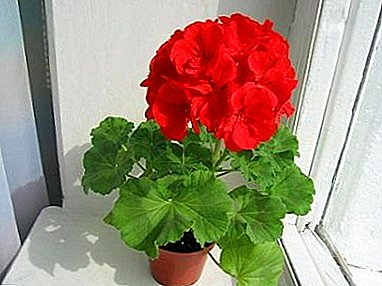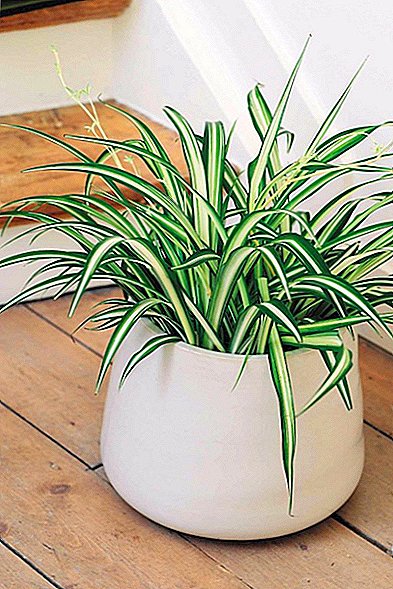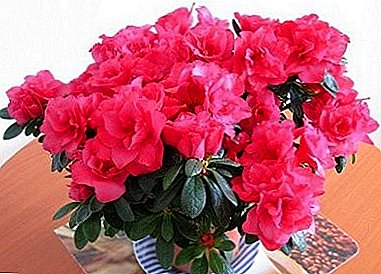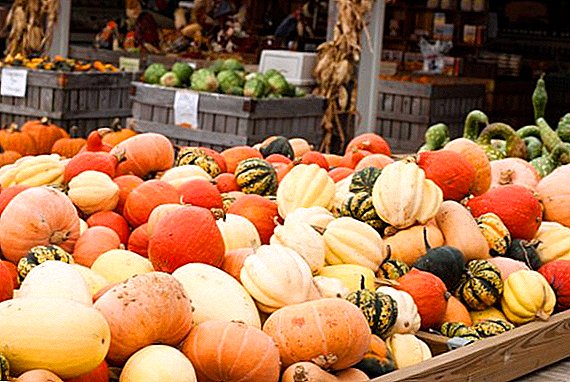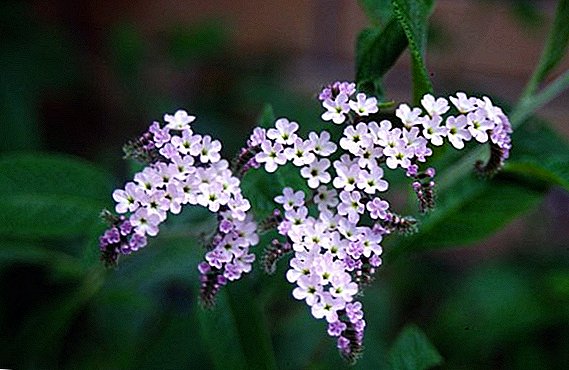 Few have heard of such a magical plant as a fern. The remains of these plants are still found by archaeologists, attributing to them the age of several million years. Also associated with this plant are many legends, one of which is about its secret flowering. Fern has always been an interesting and desirable plant in the home collection. Worldwide, there are more than 200 species and 10,000 varieties of fern, but only in the early nineteenth century, some of them began to grow at home.
Few have heard of such a magical plant as a fern. The remains of these plants are still found by archaeologists, attributing to them the age of several million years. Also associated with this plant are many legends, one of which is about its secret flowering. Fern has always been an interesting and desirable plant in the home collection. Worldwide, there are more than 200 species and 10,000 varieties of fern, but only in the early nineteenth century, some of them began to grow at home.
Today it is difficult to find an office in which the fern would not grow. This plant is so loved by everyone that now beginner and experienced flower growers with great pleasure grow a fern on their windowsill. It fits perfectly into any interior and will complement your greenhouse. Most of the representatives of the fern is not very whimsical in the care, but will require systematic attention.
The room fern has many species and names. What types of indoor ferns exist and which are best grown at home, we will describe in detail in our article.
Nephrolepis
Nephrolepis is not very whimsical to environmental conditions, so even a novice can cope with its cultivation. The plant has numerous branches growing in a dense bunch from a small rhizome. Its leaves are curved, with small transverse incisions that resemble a feather. The grown fern resembles a bunch of incredibly beautiful green feathers. The fern room nephrolepis grows no higher than half a meter.  Unlike some other ferns, nephrolepis does not cause allergic reactions. It is characterized by very fast growth, and if it is properly maintained, it will spoil you with an abundance of new branches. For better well-being, it is necessary to keep this fern on diffused light at a temperature of 21 ° C in summer and 17-18 ° C in winter. Spend time daily watering or spraying, because the home fern Nefrolepis does not tolerate a dry climate. Complex fertilizers are recommended to be applied every three weeks.
Unlike some other ferns, nephrolepis does not cause allergic reactions. It is characterized by very fast growth, and if it is properly maintained, it will spoil you with an abundance of new branches. For better well-being, it is necessary to keep this fern on diffused light at a temperature of 21 ° C in summer and 17-18 ° C in winter. Spend time daily watering or spraying, because the home fern Nefrolepis does not tolerate a dry climate. Complex fertilizers are recommended to be applied every three weeks.
Did you know? Nephrolepis will delight not only with its appearance, but also with its properties. It has the ability to purify the air of formaldehyde and other substances harmful to health.
Davallia
This genus of fern is very interesting not so much with its leaves, as with very unusual roots. The height of the shoots of davallia is not very big, maximum 20 cm. The branches are not thick, but have a bright green color. But this fern stands out for its extraordinary roots. They tend to grow and go beyond the limits of the pot, as if enveloping it. The rhizomes themselves are very fluffy, hairy, grow very densely. Coloring unusual roots - from light brownish tones to silver shades. This home fern is fast growing. Often it is called "squirrel" or "hare" foot. He is also unpretentious to the conditions of detention and with proper care is able to live for many years.  It is better to keep it in bright but diffused light in a pot with a good drainage system. Water fern need to dry as the top layer of soil. But avoid getting water on the roots. In summer, a comfortable temperature for keeping 22 - 25 ° С, in winter - 19 - 20 ° С. For fertilizing, use diluted complex minerals for fern plants once every two weeks.
It is better to keep it in bright but diffused light in a pot with a good drainage system. Water fern need to dry as the top layer of soil. But avoid getting water on the roots. In summer, a comfortable temperature for keeping 22 - 25 ° С, in winter - 19 - 20 ° С. For fertilizing, use diluted complex minerals for fern plants once every two weeks.
Important! If you use water for irrigation from the tap, let it settle for a couple of days.
Asplenium
This genus of fern is also a perennial, and it is known throughout the world. Its rhizomes are small, but creeping. The aboveground part of the plant grows by 40-50 cm. The leaves are of an unusual structure, occasionally erect, smooth, some ribbed. The fern grows a bush of saturated dark green color. Growing asplenium is fairly simple, easy to maintain and not capricious of the environment. For comfortable growth during the summer period, keep the temperature around 20 ° С and in winter not lower than 16 ° С. It is best to keep aslenium in light partial shade, daily moisturizing it with a sprayer. Fertilize it no more than once a month, because this fern is very easy to overfeed. 
Important! Despite the fact that almost all ferns need high humidity, do not fill the roots with water. This can lead to the death of the plant.
Platicerium
This indoor fern flower is not at all like its counterparts. An unusual plant in the wild grows on branches or trunks of trees and can reach enormous sizes. In home gardening is very rare, except that in collectors of exotic plants. Platicerium is grown on a piece of bark, sometimes using hanging baskets. The plant has wide and long, up to one meter, leaves growing from a piece of bark. The leaves are bright green coloring shape reminiscent of deer horns. The leaves of this fern are divided into two types: One kind of leaves serves to nourish the plant, collecting leaves, moisture and insects, which later decompose into peculiar pockets, which nourish the plant. The second kind of leaves grows more for beauty. They are much wider, grow longer than a meter.  Comfortably platicerium will be on the northeast side, with a bright but diffused light. Since the fern grows on the bark, instead of watering, you can immerse it in water. The temperature for a comfortable habitat of a plant should fluctuate in the summer from 17 to 25 ° С, and in the winter not higher than 15 ° С. With the advent of warming until the end of autumn, it can be fed with half the concentration of complex fertilizer for ferns.
Comfortably platicerium will be on the northeast side, with a bright but diffused light. Since the fern grows on the bark, instead of watering, you can immerse it in water. The temperature for a comfortable habitat of a plant should fluctuate in the summer from 17 to 25 ° С, and in the winter not higher than 15 ° С. With the advent of warming until the end of autumn, it can be fed with half the concentration of complex fertilizer for ferns.
Did you know? Recent studies by Japanese scientists have shown that a fern can excrete radiation from the body.
Multiple row
This genus of fern is one of the most beautiful plants. It has a small but dense rhizome. The leaves are slightly curved, saturated green color, dense and brightly shine in the sunlight. Shoots resemble beautiful feathers that neatly sharpen to the end. Multi-row grows up to 70 cm in height and forms a rather dense shrub. The plant is very fond of moisture and grows wild in coniferous forests, as well as on the banks of rivers and lakes. Most often mnogoryadorny planted in greenhouses and alpine slides. For home content, it is also suitable.  The highlight of growing this fern is the constant maintenance of moisture in the pot. Like other varieties, it requires indirect sunlight. Summer temperature ranges from 16 to 24 ° C. Another feature of the multi-row is its increased resistance to frost. During the period of active growth requires abundant watering, but with the advent of winter, you can moisten as the soil dries. Fern can be fed once a day with diluted mineral fertilizers.
The highlight of growing this fern is the constant maintenance of moisture in the pot. Like other varieties, it requires indirect sunlight. Summer temperature ranges from 16 to 24 ° C. Another feature of the multi-row is its increased resistance to frost. During the period of active growth requires abundant watering, but with the advent of winter, you can moisten as the soil dries. Fern can be fed once a day with diluted mineral fertilizers.
Pelley
Pelley, or, as it is also called, push-button fern in the wild, can be found throughout America. As a home plant, pellet is quite rare, as it is mistakenly considered a very capricious plant. Spreading branches reach a length of more than half a meter. But in height it does not grow above 25 cm. The leaves are small, rounded, interlocking to the center of the hairy stem. Contrary to all rumors, it is quite easy to grow pellets.  Unlike other types of fern, it can be in a dry environment. Pelleya adequately tolerates arid climate, but needs infrequent spraying with non-cold water, to which it responds very well. In the summer and spring, new leaves grow, and the old ones eventually dry out. When home maintenance fit the eastern side of the room with a diffused light. In the summer, keep the temperature at 22 - 25 ° C, and in the winter at 13 - 15 ° C. When watering, let the soil dry out a little and avoid waterlogging, and in the frosty season, reduce watering up to once a week. Feed the plant once a month with diluted organic fertilizers.
Unlike other types of fern, it can be in a dry environment. Pelleya adequately tolerates arid climate, but needs infrequent spraying with non-cold water, to which it responds very well. In the summer and spring, new leaves grow, and the old ones eventually dry out. When home maintenance fit the eastern side of the room with a diffused light. In the summer, keep the temperature at 22 - 25 ° C, and in the winter at 13 - 15 ° C. When watering, let the soil dry out a little and avoid waterlogging, and in the frosty season, reduce watering up to once a week. Feed the plant once a month with diluted organic fertilizers.
Did you know? What we all call fern leaves are actually branches with predrests.
Pteris
Pteris is considered one of the most unpretentious and peace-loving plants. It is found throughout the world, both in the wild and in the home. It looks like a small neat shrub with small various leaves of all shapes and sizes. They are painted in a light green color with thin white stripes. It looks like a curly room fern and will require very little of your attention. In garden culture, this genus of fern is considered the most friendly to other plants and will gladly complement any green field. Houses grow several species of this genus of ferns.  Pteris without any consequences can tolerate small changes in temperature and sunlight. For a comfortable life of a fern in the summer, keep the temperature at 20 - 22 ° C, and in the winter at 10 - 13 ° C. Watering in hot weather should be carried out daily, to the cold reducing the intensity to two times a week. For feeding, use complex fertilizers for fern no more than once every two weeks. And also protect the pteris from drafts, because if it blows through, it can shed its leaves.
Pteris without any consequences can tolerate small changes in temperature and sunlight. For a comfortable life of a fern in the summer, keep the temperature at 20 - 22 ° C, and in the winter at 10 - 13 ° C. Watering in hot weather should be carried out daily, to the cold reducing the intensity to two times a week. For feeding, use complex fertilizers for fern no more than once every two weeks. And also protect the pteris from drafts, because if it blows through, it can shed its leaves.
Important! Thyroid ferns are poisonous.
Tsirtomium
Cytromium is also a perennial plant. Branches are pinnate, sometimes reaching up to 70 cm in length. The leaves are thin, sharp, slightly curved towards the edge. The plant is rich green in color, and a small wax coating on the leaves shines very beautifully in the sun. Cortomium grows at an early age slowly, and as an adult a few new sheets appear on it during the year. This fern is relatively winter-hardy and can easily tolerate a dry climate in the apartment.  It is recommended to have such a fern on the northern sill in light penumbra. Watering a plant in the summer should be a couple of times a week, and in cold weather once or as the top layer dries out weakly. The optimum summer temperature is 23 - 25 ° С, and in the period of cold weather 15 - 18 ° С. At higher temperatures, the fern requires more moisture. It can be fertilized once every three months with diluted mineral fertilizers or organic matter.
It is recommended to have such a fern on the northern sill in light penumbra. Watering a plant in the summer should be a couple of times a week, and in cold weather once or as the top layer dries out weakly. The optimum summer temperature is 23 - 25 ° С, and in the period of cold weather 15 - 18 ° С. At higher temperatures, the fern requires more moisture. It can be fertilized once every three months with diluted mineral fertilizers or organic matter.
Polypodium (Centipede)
The Centipede is a homemade plant of fern, rarely found in home collections. Growing it is a bit more complicated than the above. This genus of ferns has weak-skinned leaves. Light green leaves of various shapes and sizes depart from a thickened root in rows, in honor of which he received this name. For home growth of such a fern choose shaded place with good penumbra. He needs to maintain constant high humidity, especially in the frosty time. The temperature must be kept in strict limits: for the warm season, 18–20 ° C, with cold weather 10–14 ° C. Polypodium should be watered with extremely warm water, quite often, using spraying. During growth, feed it with liquid fertilizer for decorative flowers once every two weeks. Place the polypodium as far as possible from the heaters.  We told you about the most popular home flowers of fern. Many of them are not as picky as they might seem. They need to show a little care and attention, and who knows, maybe you are lucky enough to see that legendary fern bloom.
We told you about the most popular home flowers of fern. Many of them are not as picky as they might seem. They need to show a little care and attention, and who knows, maybe you are lucky enough to see that legendary fern bloom.


